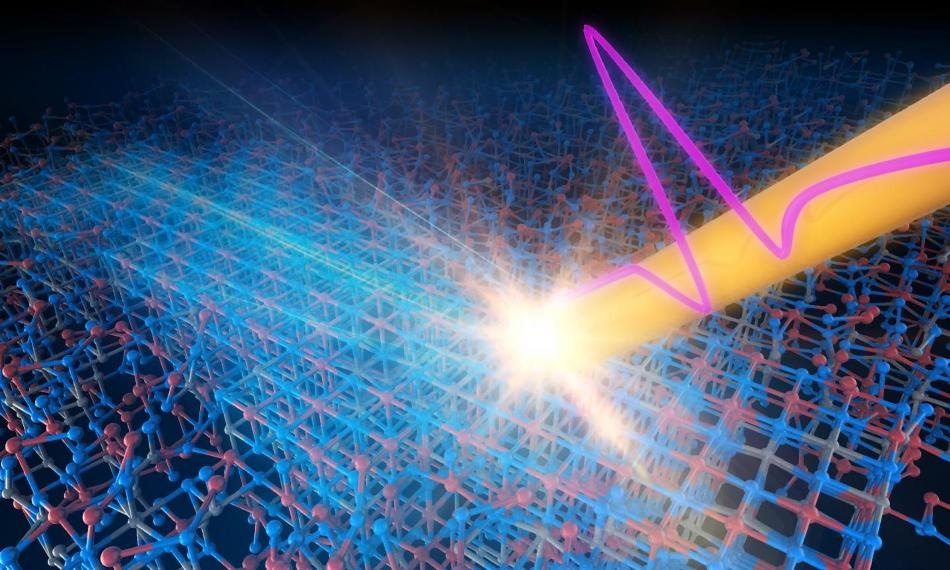Nov 7 2018
In order to thoroughly control how a data-storage material switches to physical form, researchers have developed the world’s most powerful electromagnetic pulses in the terahertz range.
 This is a terahertz electromagnetic pulse controlling the physical structure of data-storage material. (Image credit: Kyoto University/Hirori Lab)
This is a terahertz electromagnetic pulse controlling the physical structure of data-storage material. (Image credit: Kyoto University/Hirori Lab)
This latest discovery could present new opportunities to scale down memory devices, ultimately transforming how computers manage data.
While compact disks (CDs) may well be falling out of fashion, they may have driven the next generation of computer nanotechnology. CDs feature a glass layer that contains a phase-change material which can be easily encoded with data when light pulses render the crystals in the layer’s tiny regions to either melt or grow.
When phase-change materials are activated by electrical impulses—instead of light—they would provide novel memory technologies that have faster and more stable operation than otherwise possible in many existing types of memory devices. Moreover, memory density could be increased by downscaling memory sites in phase-change materials. However, this continues to be a major challenge due to the complexity of regulating the growth of crystals—crystallization—and melting—amorphization—procedures.
Tackling this problem in an article published in Physical Review Letters, a research team, headed by Kyoto University, applied high-powered terahertz pulses as a trigger and noticed nanometer-scale growth of each crystal in a phase-change material containing germanium, antimony, and tellurium, or GST.
One reason crystallization and amorphization of GST under an electric field are difficult to control is the heat diffusion effects in the micrometer scale associated with electrical inputs, which also contribute to the crystallization. Fortunately, terahertz technologies have matured to the point where we can use short pulses to generate strong electric fields while suppressing heating effects.
Hideki Hirori, Group Leader, Kyoto University.
Along with his colleagues, Hirori devised a terahertz pulse generator that was able to deliver highly intense and ultra-short terahertz pulses across a couple of gold antennas. These terahertz pulses produced an electric field in the GST sample similar to that of an electrically switched device. Most significantly, this method considerably reduced the heat diffusion due to the very short duration of terahertz pulses—about 1 picosecond, or 10−12 seconds—allowing excellent control over the direction and speed of GST crystallization. Between the pair of gold antennas, a region of crystallization grew in a straight line in the direction of the field, at several nanometers per pulse.
When the researchers observed the stepwise variations in crystallization while simultaneously boosting the number of terahertz pulses, they were astonished to find that crystal conductivity quickly sped up after a certain point, and did not increase in line with the increase in terahertz strength. The team came up with a theory that electrons that jump between states in the crystal contributed a surprising source of heat to the system and thus increased crystallization.
Our experiment reveals how nanoscale and direction-controlled growth of crystals in GST can be achieved. We also identified a phenomenon which should assist in the design of new devices and ultimately realize the fast and stable digital information handling potential that this material promises.
Hideki Hirori, Group Leader, Kyoto University.